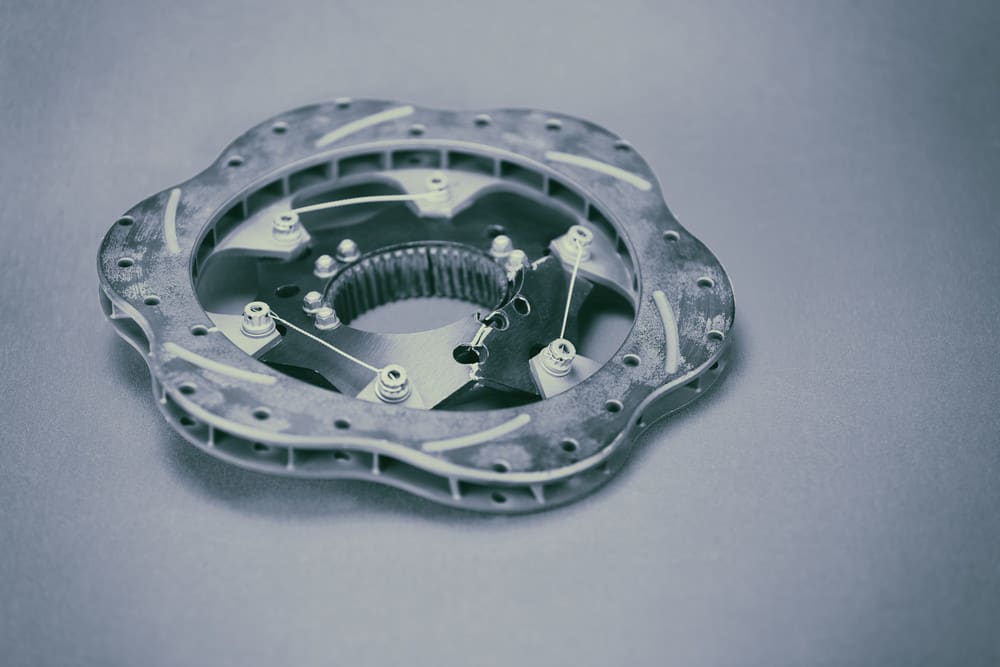

Brake rotors are the large metal discs visible behind the wheels of a car. These spin along with the wheels so that when the brake pads clamp down on them, they stop the car. Brake discs have to withstand a tremendous amount of heat. Not only that, they have to dissipate that heat into the air as quickly as possible because the brakes will probably be pressed down again in a short amount time. If the surface of the disc becomes uneven over time, braking will become jittery and less effective. This is usually referred to as warping.
How brake rotors warp
A common misconception when rotors are referred to as “warped” is that they are no longer straight when rotating (similar to how a bicycle wheel gets warped). For cars, in order for that to be the case, the rotors themselves would have to be defective as the temperature required to make metal that resilient soft enough to simply bend would be tremendous.
Instead, the warping really refers to the flat surface of the rotor becoming uneven. Heat is the number one cause of this, and can cause warping in more than one way:
Glazing the brake rotor with material from the brake pad. This happens because brake pads, like tires, are made with different amounts of hardness and stickiness depending on the intended purpose. When brake pads made for normal road use get very hot from high-speed driving and braking, or from riding on the brakes for a prolonged period of time, the grippy material can get too soft and basically "paint" the brake rotors. This means that the brake pads won't grip onto metal when the brakes are applied once again, causing decreased brake performance that is less smooth than before.
Wearing down the surface of the rotor and making harder spots in the metal stay slightly raised off the surface. The reason that brakes don't normally wear down very much revolves around a fairly straightforward concept. Since the metal of the rotor is harder than the brake pad applying friction to it, the pad wears down while the rotor remains largely unaffected. With excessive heat, the metal becomes soft enough for the pad to wear down the rotor surface. This means that slightly less dense spots in the metal wear down faster and make the harder spots stick out, causing warping.
How to prevent warped brake rotors
To prevent the brake rotors from becoming glazed over with brake pad material, be mindful of how much braking the vehicle is doing compared to what is done during normal operation. When going downhill for prolonged amounts of time, try to control the speed of the vehicle by shifting the transmission into a lower gear. For automatics, the only option is usually to shift into "3," while vehicles with a manual or other shiftable transmission can decide on the best gear to use based on the engine's revs. When the brakes are hot, never sit with the brake pedal hard down on one spot.
Also, when the brake pads are first installed they should be properly broken in to ensure they don't leave too much material on the brake rotor. This usually involves getting the car up to road speed and then braking until it is traveling ten miles per hour slower. After this is done a few times, you can work your way up to braking to a complete stop. The first few full stops after that should be done with care. This allows the brake pad to perform better during hard braking further down the road.
The steps that can be taken to prevent excess wear on the surface of the brake rotor are similar to the steps for avoiding glazed rotors. Be sure to avoid hard braking when the brake rotors have gotten hot from prolonged use.
What do warped rotors feel like?
There are a few symptoms to look for when it comes to diagnosing warped rotors:
If the brake rotors are glazed over, you may hear excessive squeaking when the brakes are applied or even smell burning rubber.
If the braking suddenly becomes jittery and inconsistent, the brake rotors should be the first suspect.
If the vehicle vibrates when coming to a stop, the brake rotor is likely warped.



